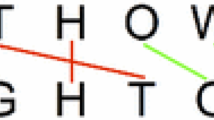Abstract.
Detecting and eliminating duplicate records is one of the major tasks for improving data quality. The task, however, is not as trivial as it seems since various errors, such as character insertion, deletion, transposition, substitution, and word switching, are often present in real-world databases. This paper presents an n-gram-based approach for detecting duplicate records in large databases. Using the approach, records are first mapped to numbers based on the n-grams of their field values. The obtained numbers are then clustered, and records within a cluster are taken as potential duplicate records. Finally, record comparisons are performed within clusters to identify true duplicate records. The unique feature of this method is that it does not require preprocessing to correct syntactic or typographical errors in the source data in order to achieve high accuracy. Moreover, sorting the source data file is unnecessary. Only a fixed number of database scans is required. Therefore, compared with previous methods, the algorithm is more time efficient.
Similar content being viewed by others
Author information
Authors and Affiliations
Additional information
Published online: 22 August 2001
Rights and permissions
About this article
Cite this article
Tian, Z., Lu, H., Ji, W. et al. An n-gram-based approach for detecting approximately duplicate database records. Int J Digit Libr 3, 325–331 (2002). https://doi.org/10.1007/s007990100044
Issue Date:
DOI: https://doi.org/10.1007/s007990100044




